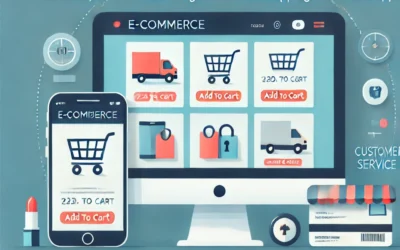A landing page is one of the most critical elements of any website, especially when it comes to driving conversions. Whether your goal is to capture leads, sell products, or promote a service, a well-crafted landing page can be the difference between success and failure. In this guide, we’ll walk through the key steps to building a high-converting landing page that engages visitors and encourages them to take action.
1. Define Your Goal
Before you start designing your landing page, it’s crucial to know exactly what you want to achieve. Is your goal to gather email sign-ups, generate sales, or promote a free trial? Defining this goal helps you stay focused and informs every decision, from design to content. Be specific with your goal and ensure that your call-to-action (CTA) aligns with it.
Example:
- Goal: Increase email subscribers for a newsletter.
- CTA: “Sign up for our weekly insights.”
2. Know Your Audience
Understanding your target audience is essential for creating a landing page that speaks to their needs and pain points. What are they looking for? What problems are they trying to solve? Your landing page should be tailored to resonate with your audience’s emotions, addressing their concerns and offering clear solutions.
Pro Tip:
Create buyer personas to visualize your ideal customer and build your messaging around their needs.
3. Craft a Strong Headline
The headline is the first thing visitors will see, and it’s crucial to grab their attention immediately. Your headline should be clear, concise, and speak directly to the benefit the visitor will receive. Avoid vague language—be specific about what your offer is and why it’s valuable.
Example:
Instead of “Get Healthy,” try “Lose Weight Naturally with Our 7-Day Meal Plan.”
4. Use Clear and Concise Copy
The body of your landing page should clearly explain what you’re offering and why it’s valuable. Use simple, direct language that’s easy to scan. Break up text into bullet points or short paragraphs to make it digestible. Avoid overwhelming visitors with too much information—focus on the key benefits.
Key Elements:
- Value proposition: What makes your offer unique?
- Benefits: How will it improve the visitor’s life?
- Social proof: Testimonials or reviews that build trust.
5. Design for Visual Appeal
A clean, aesthetically pleasing design is critical for keeping visitors engaged. Your landing page should have a clear hierarchy, with the most important elements (such as the headline and CTA) standing out. Use plenty of white space to reduce clutter, and stick to a simple color palette that complements your brand.
Design Tips:
- Use large, bold fonts for headings.
- Ensure your CTA button stands out with a contrasting color.
- Include high-quality images or videos to showcase your offer.
6. Create a Strong Call-to-Action (CTA)
Your CTA is the key to conversions. It should be easy to spot and clearly tell visitors what action to take. Use action-oriented language such as “Download Now,” “Get Started,” or “Claim Your Free Trial.” Avoid generic terms like “Submit” or “Click Here.”
CTA Best Practices:
- Make the button large and clickable.
- Place the CTA above the fold so visitors don’t have to scroll to find it.
- Repeat the CTA throughout the page to reinforce the desired action.
7. Incorporate Social Proof
Trust is essential when converting visitors into customers. Incorporate elements of social proof, such as customer testimonials, case studies, or reviews, to build credibility. If you have worked with well-known clients or have received awards, showcase them on your landing page.
Example:
“Over 5,000 happy customers trust our product to improve their lives.”
8. Optimize for Mobile
More than half of web traffic comes from mobile devices, so your landing page must be mobile-friendly. Ensure that your layout is responsive, images load quickly, and text is legible on smaller screens. Test your landing page across multiple devices to ensure a seamless experience.
9. Test and Iterate
Once your landing page is live, it’s essential to track performance and make improvements over time. Use A/B testing to compare different headlines, CTA placements, or design elements to see what works best. Continuously optimize your page to boost conversions based on real data.
Final Thoughts
Building a high-converting landing page takes thoughtful planning and design, but when done correctly, it can significantly impact your conversion rates. By defining your goal, crafting a compelling message, and optimizing for user experience, you’ll create a landing page that not only attracts visitors but converts them into loyal customers.



0 Comments